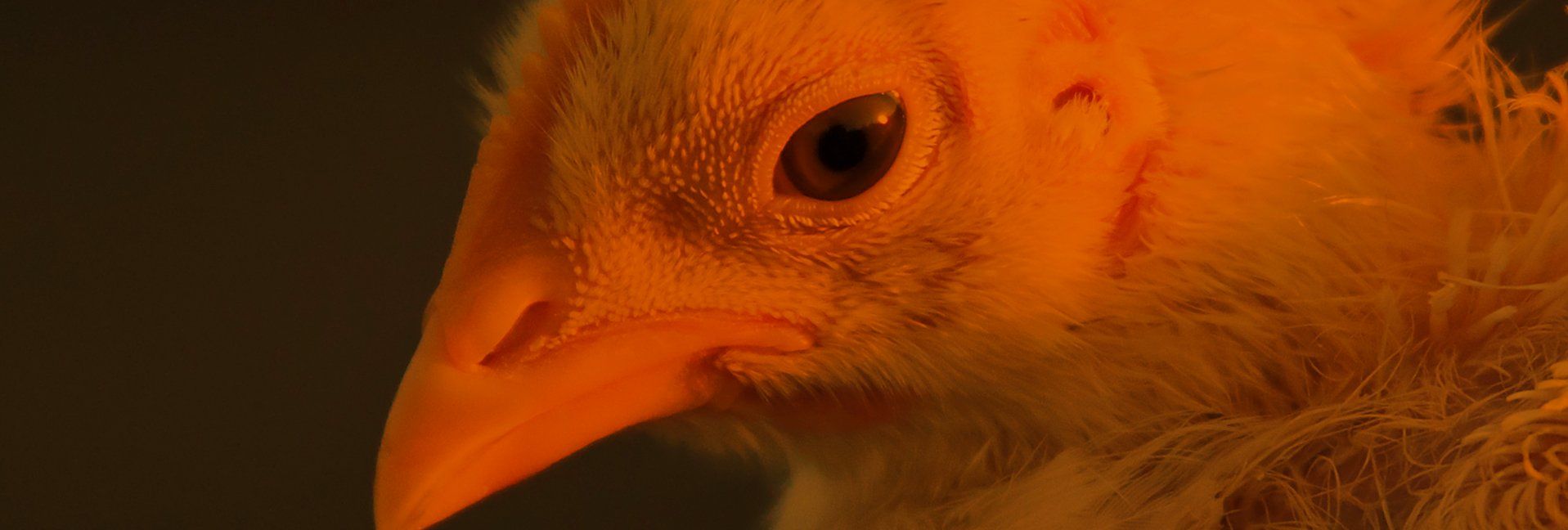Understanding Failure to Thrive in Baby Chicks
Watching for clues can save your flock


The first week of your chick’s life is an exciting time for everyone. Good management will help ensure your chicks get to their second week of life. When you do have a problem, however, early recognition is essential toward mitigating any loses. Keeping an eye on the overall health of the birds and the environment that they are raised in is the most effective way to ensuring your chicks’ overall health and to help lay the groundwork for a healthy flock.
When we have chicks, our paternal (or maternal) instincts take over. We worry when they’re healthy and we especially worry when we see weak chicks. We want to know how to get these chicks healthy and also why they are not thriving so we can protect future flocks. This article will provide some background on causes of weak chicks during their first seven days of life.
Rule of thumb:
In general, deaths in chicks in approximately the first 3-4 days post-hatch are closely linked to the quality of the day-old chicks from the hatchery. After 3-4 days, death is more closely linked to the quality of the care after delivery of the chicks.
Signs of weak chicks
It is important to visualize and recognize signs of weak chicks. The following is a list of things to pay attention to.
Assess the overall body condition of the chicks to see if they are developing poorly (i.e. reduced muscle mass and smaller-than-expected body weights). If a chick died of a chronic problem, they may appear smaller than the rest of the chicks, have reduced muscle mass, shrunken combs and dried out skin. Alternatively, if the chick died suddenly, the dead chick typically has normal size and muscle mass.
Are the chicks huddling at all? If you see lame chicks or huddled chicks below seven days of age, the cause is often related to a bacterial infection from bacteria such as E. coli, Salmonella, Streptococcus or Enterococcus.
Big picture, it is important to realize that many problems in young chickens are related to an infectious process. Specific areas to assess on the chicks include:
• Look in the vent area to assess the color of the fecal material. If you see any whitish grey pasting around the vent this can be caused by a bacterial infection (typically Salmonella) or kidney disease. These chicks should ideally be isolated from the remainder of your healthy chicks. Chicks with dirty feathers around the vent (dirty lumps) can be a sign that they have suffered a period of stress.
• Look at the naval area to ensure there is no infection and that the naval is closed (sometimes the yolk sac will not be fully withdrawn). If the naval is open it is more likely to become infected. A chick with an infected naval will have redness (i.e. inflammation). If the inflammation is due to an infection, the infection could spread to the yolk sac and other internal organs. If you see an inflamed naval area and also observe mortality (i.e. death) around 3-4 days post-hatch the cause of death is likely an infected yolk sac.
• Look for abnormal head position and the position of chicks that are dead. Chicks that are stargazers or have a “wryneck” can have meningitis (an infection in the tissue surround the brain). If you do see a dead chick, take note of what position the chick is in. For example, if the chick is on its stomach with its neck forward and feet back that is typically a sign of a chick choking, which could be the result of an infectious respiratory disease.
Unfortunately, sometimes the only clinical sign you see is death. This is likely to be from several potential infectious diseases including the bacteria such as Salmonella, Streptococcus, Enterococcus and the fungus Aspergillus, which can result in inflammation of the brain.
Remember, if you do have mortality or sickness to submit the affected chicks or chickens to your states diagnostic laboratory. If they are sick, the veterinarians and pathologists at the lab will euthanize the birds and then do an autopsy on them. Remember, the overall goal is to identify the cause of death so you can protect the remainder of your flock. This is an extremely valuable service and in most states it is either free or heavily subsidized by the state.
Assessment of day-old chicks
You can do some of the following to assess the health of day old chicks:
• You can measure their temperatures at the vent with a child ear thermometer. Their body temperature should be between 40 and 41°C. (104° and 105.8° F.)
• Uniformity should be above 90% (see how to measure uniformity below)
• The feet and beaks should not be swollen. Swollen feet result from high hatching temperatures at the hatchery
• Eyes should be clean, open and shiny
• It should take approximately THREE seconds or less for them to stand up correctly after you place them gently on their backs
Why were they sick in the first place?
In many ways, this is the most important question since your goal is to prevent your chicks from getting sick again. As mentioned above, sick chicks in the first 3-4 days of life can be a function of problems or diseases in the breeding flock or hatchery. For example, if you see lame chicks around four days of age, bacterial infections can be the cause. These infections can be a result of poor quality hatching eggs or poor environmental conditions in the hatchery.
If you do see dead chicks, keep track of how many dead chicks you have per day. “Normal” mortality in the first and second week of life should not exceed 1%. While this number is easy to exceed in small flocks that are common in backyard poultry settings, it is important to recognize that first and second week mortality is relatively rare under good husbandry and health conditions.
How to help ensure your chicks thrive
Good care and husbandry is essential for maintaining healthy chicks and for helping weak chicks. Making sure your chicks get off to a healthy start is essential for organ development and long-term health and productivity.
For optimal chick health, avoid stress by accomplishing the following:
• Cold chicks do not eat and drink enough! Ensure there is enough feed and water that is easily accessible in a warm area (the air temperature near the chicks for the first week should be between 33° and 35°C. which is 91.4° to 95° F.). If chicks are having difficulty finding adequate feed and water, this will result in poorly developed birds.
• Young chicks are not good at regulating their temperature. Therefore, keep the chicks in a place that is warm and make sure there are no drafts where the birds are being raised.
How to measure healthy uniformity
Weigh your birds every day for the first week so you can keep a close eye on their weight. Make sure you have a good and accurate scale!
One thing you can do is to measure the birds’ uniformity. Here’s how:
1. Weigh each bird
2. Calculate the average weight
3. From the average weight deduct 10% and add 10%
You should have more than 80% of your flock in this weight class. The advantage of having a uniform flock is that uniform flocks are easier to care for than non-uniform flocks. For example the height of drinkers and feeders are different if you have a large height or weight range.
April 2, 2018
Tags:Pitesky's Poultry

Chicken Whisperer is part of the Catalyst Communications Network publication family.












